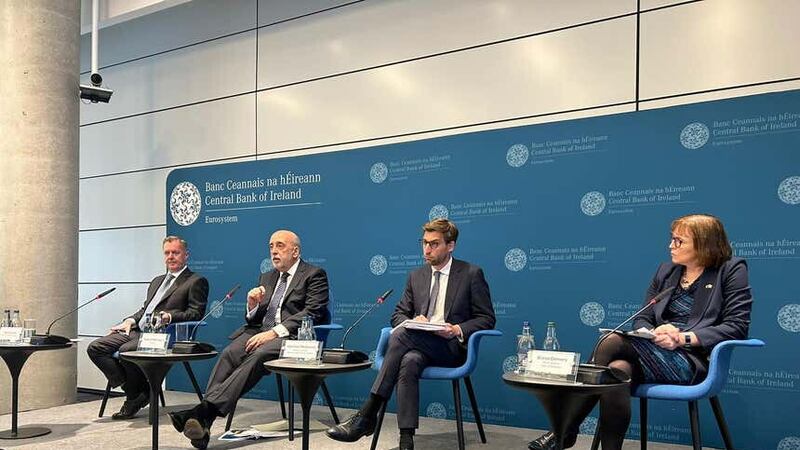The risks facing the Irish financial system have increased as inflation is weighing heavily on the global economy, the Central Bank has warned.
Persistent inflation and higher interest rates continue to pose challenges to an otherwise resilient Irish economy, according to the Central Bank’s financial stability review which was published on Wednesday.
The report outlines the Central Bank’s assessment of key risks facing the financial system, the resilience of the economy and financial system to adverse shocks, and policy actions to safeguard stability.
The financial services regulator determined that the Irish banking system has also proved resilient to recent turbulence and, additionally, has capacity to absorb potential future shocks.
However, pockets of the non-bank financial intermediation sector could see existing vulnerabilities amplified.
The Central Bank also announced it would increase the countercyclical capital buffer (CCyB) to 1.5%.
This time-varying capital requirement is designed to promote a sustainable provision of credit to the economy by making the banking system more resilient to cyclical risks.
The first financial stability review of 2023 indicates the global economy is also at risk from a tightening of financial conditions and geopolitical fragmentation.
The Central Bank said while many are stretched by the cost-of-living crisis, households and businesses are proving resilient to the inflationary shock so far.
In his opening remarks, governor Gabriel Makhlouf said there was a sheer level of uncertainty owing to the interlocking shocks of the pandemic, Russia’s war against Ukraine and the current inflationary episode, alongside the speed with which these events have unfolded and transmitted across the globe.
Mr Makhlouf said core inflation in particular has proved “more stubborn” than many would have predicted.”
He said the Irish economy continued to “surprise” with its resilience, and growth forecasts have improved, but cautioned a range of adverse outcomes may materialise.
“Rising interest rates have already had immediate effects in the commercial real estate market, and appear to be slowing the housing market in recent months.”
The governor said the failures of banks internationally have provided another example of the speed with which risks can materialise.
Mr Makhlouf said while some borrowers will face difficulties, higher levels of profitability for Irish banks are likely to continue.
“The banking system has ample headroom above regulatory requirements in both capital and liquidity, with very high levels of cash reserves,” he said.
On mortgage measures, the governor said the Central Bank is only beginning to see how the changes made to the framework late last year are operating in the context of broader mortgage and housing market developments.
He said the Central Bank would continue to carry out detailed research and analysis on the measures.
Mark Cassidy, director of financial stability, said expectations from the forecasts are that core and headline inflation will continue to decline.
“What is key is that it remains very difficult to gauge how challenging it will be to get inflation down all the way to the target of 2% on a sustained basis, and the expectation is for further rate increases in the near term,” he said.
He said that while, on average, Irish households have deleveraged substantially through the last decade, some cohorts will experience increased financial stresses, particularly lower-income households.
Some increase in credit risk and arrears is expected.
Mr Makhlouf said: “Our assessment is that, if the economy continues to evolve in line with our expectations, we are likely to see only modest increases in financial stress among domestic borrowers, despite clear challenges for some groups of borrowers.”
Mr Cassidy added that while domestic businesses have experiences a severe input cost shock, profits are steady due to strength in the domestic economy.
However, many businesses are vulnerable to demand slowdown and about 20% of SMEs had declining margins in 2022.
The Central Bank is expecting an increase in insolvencies from pandemic lows but this will remain modest compared to historical levels.
The domestic economy is showing signs of resilience and the labour market remains particularly tight.
Mr Cassidy noted that unemployment is now at multi-decade lows, at 4.1% for the first quarter of 2023.
Real incomes have declined last year due to high inflation but Mr Cassidy said they will increase by around 2.25% this year and next year.
Household financial stresses are expected to rise modestly based on the current outlook.
However, the Irish economy remains vulnerable to the risk of persistent inflation and an economic slowdown, which could expose vulnerabilities.







